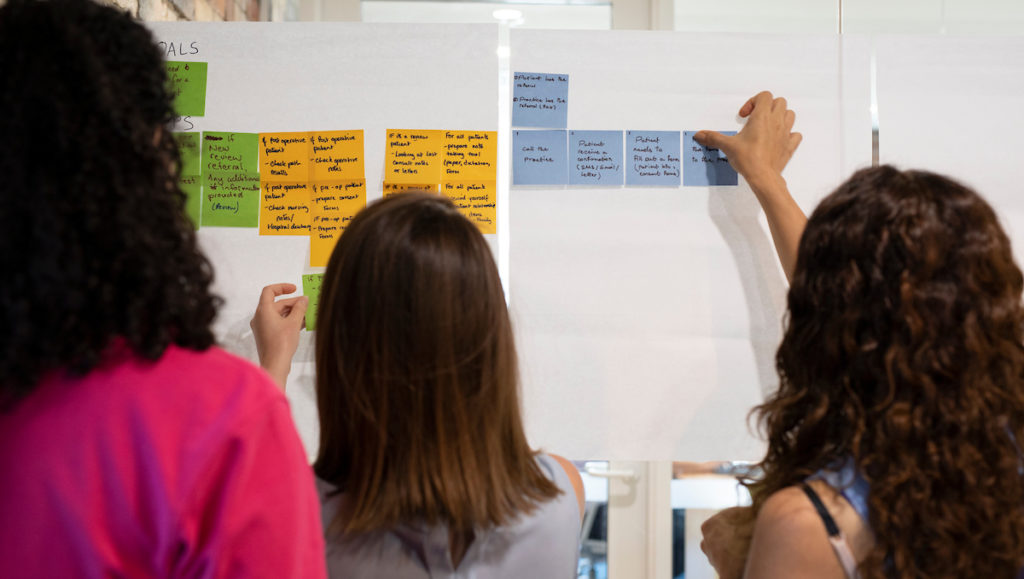We’re evolving
Genie Solutions is now a Magentus company
Genie Solutions is now a Magentus company
Manage your practice in the cloud – anywhere, anytime, from any device.
Australia’s leading practice management
software for medical professionals.
Level 2 TCB Building, 315 Brunswick Street, Fortitude Valley QLD 4006

At Genie, our relationship to the word “Experience” is multi-dimensional – it’s where the customer experience, user experience, employee experience and industry experience intersect to create a unique impact.
We see a great “experience” as more than a great Appointment Booking Workflow in Genie, a warm welcome email from Support, or quick response to a piece of customer feedback on a Training Session.
It’s the sum of all of the moments that matter—the interactions between our people in the Product, Training, Sales and Support teams and our customers – that shape the way each one feels about the other.
When we talk about experience at Genie, the concept isn’t limited to the way our products and services look and feel.
A great practitioner experience is how it looks, how it feels, how it sounds, how it works. It’s all of the pieces we pull together to create an experience greater than the sum of its parts.
It’s how we answer the phone in Support, it’s the simplicity of a product flow that “just works”, it’s the honesty and transparency of our communications when we mess up, it’s the care and rigour we apply to data security and product reliability, it’s the extra effort that our field staff take to connect with customers in remote areas.
Co-design is a system of working that combines professional expertise and first-hand, lived experience to design solutions to problems we’re better off tackling together than alone. The principles of co-design ensure that the expertise of our customers is taken into account alongside the expertise of our team of designers, developers when we create new product solutions.
“Instead of looking inward at what our organisation knows, we open up the design process to our users,” says Tam McKenzie, Senior Product Designer at Genie Solutions. “No matter if you’re a software expert or dealing with patients day-to-day, co-design in healthcare encourages us to work together to design solutions to deliver the greatest good to the greatest number of users.”
One of our goals is to help medical practitioners improve health outcomes for their patients through better practice management. To be able to do that, we need to understand what challenges our users face — and the best people to inform us are usually the ones right in front of us.
“Co-design helps us to design a more informed product for our customers, by making sure our decisions are informed by our actual users,” says Komal Rele, Senior Product Designer at Genie Solutions.
The co-design approach is spearheaded by the User Experience (UX) team and goes beyond just consultation. It’s about collaborating with all stakeholders — from our software developers to medical receptionists — to ensure that the very best solutions are designed and delivered.
We use a co-design approach on every single project we take on. “Co-design is not a ‘nice to have’ — it’s part of our everyday process,” says Michael Wilkins, Senior Product Designer. Whether it’s big or small, there are always elements of collaboration in play.
Through regular online surveys, phone interviews and on-site visits – our team collects and distills information from a huge range of people to understand the challenges they’re facing, to seek inspiration for the future and consider product requests. From there, the Genie Solutions UX team prototypes solutions and iterate alongside key stakeholders before they are developed and released into the world.
The UX team at Genie Solutions wanted to take a fresh look at a prescribing module in Gentu.
The team assembled a group of ten user subject matter experts and worked with them for four months, conducting research to dive into the shortcomings of existing solutions, identify pain-points that other solutions haven’t addressed and gauge the expectations of users.
This research eventually became sketches and, as Tam says, “We started with a lot of ideas but through talking with our users, we were able to narrow them down. The concepts started off rough, we even did paper prototypes! However as we refined our ideas through engagement with the users and the product and development teams over the 4 months the design become more and more like it would look in Gentu.”
It allowed the team to create a module that supported the Gentu users’ workflow and captured everything they’d need from it. Within the first week of the module’s release, over 300 prescriptions were generated, and even users who weren’t included in the research group sent us feedback on how much they liked the feature.
We are always looking to do things better — and do things differently. As a result, users not only get access to new product features and early releases, they also get to contribute to the solutions that are built.
Tam knows that the users are really the experts of their experience. “Often we find our customers use our product in ways we never could have dreamed of — so if we’re not getting out there engaging with our users so closely, we just wouldn’t know,” she says. “With co-design, you get to see the best case scenario, worst case scenario, and the things that change your perspective so you can adapt and evolve your approach for a better outcome.”
Learn more about how our products can support the success of your business.
Learn more about how our products can support the success of your business.
2023 All Rights Reserved © Genie Solutions, A Magentus Company